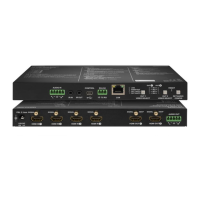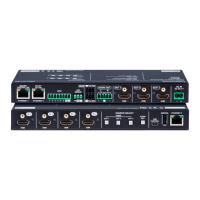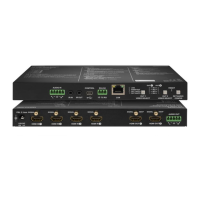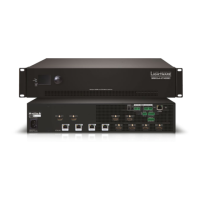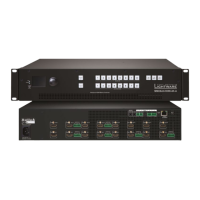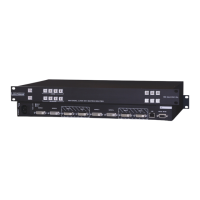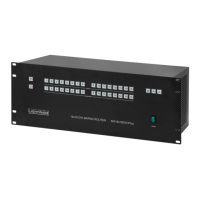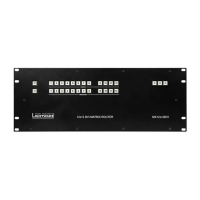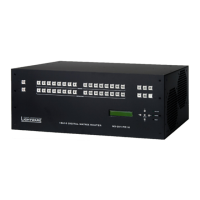Page 84 / 119 Section 8. LW3 Programmers’ reference
Example:
> 1103#GET/MEDIA/UART.*
< {1103
< pr/MEDIA/UART.PortCount=5
< pr/MEDIA/UART.PortUI=P1:403;P2:404:P3:404;P4:404;P5:404
< pr/MEDIA/UART.P1=LOCAL
< pr/MEDIA/UART.P2=TPSIN1
< pr/MEDIA/UART.P3=TPSIN2
< pr/MEDIA/UART.P4=TPSOUT1
< pr/MEDIA/UART.P5=TPSOUT2
< }
INFO
The lines of the signature are also Cr and Lf terminated.
8.3.6. Subscription
A user can subscribe to any node. Subscribe to a node means that the user will get a
notification if any of the properties of the node is changed. These notifications are
asynchronous messages - such as the ones described above - and hence, they are useful
to keep the client application up-to-date, without receiving any unwanted information. When
the user does not want to be informed about the changes anymore, he can simply
unsubscribe from the node.
ATTENTION!
The subscriptions are handled separately for connections. Hence, if the connection is
terminated all registered subscriptions are deleted. After closing a connection the subscribe
command has to be sent in order to get the notifications of the changes on that connection.
Subscribe to a node
Command format: OPEN [nodePath]
Response format: o- [nodePath]
Example:
> OPEN/MEDIA/VIDEO
< o-/MEDIA/VIDEO
Subscribe to multiple nodes
In order to subscribe to multiple nodes, the asterisk wildchar can be used.
Command format: OPEN [nodePath]/*
Response format: o- [nodePath]/*
Example:
> OPEN/MEDIA/VIDEO/*
< o-/MEDIA/VIDEO/*
Get the active subscriptions for the current connection
Command format: OPEN
Response format: o- [nodePath]
Example:
> OPEN
< o-/MEDIA/VIDEO
< o-/EDID
< o-/LOG

